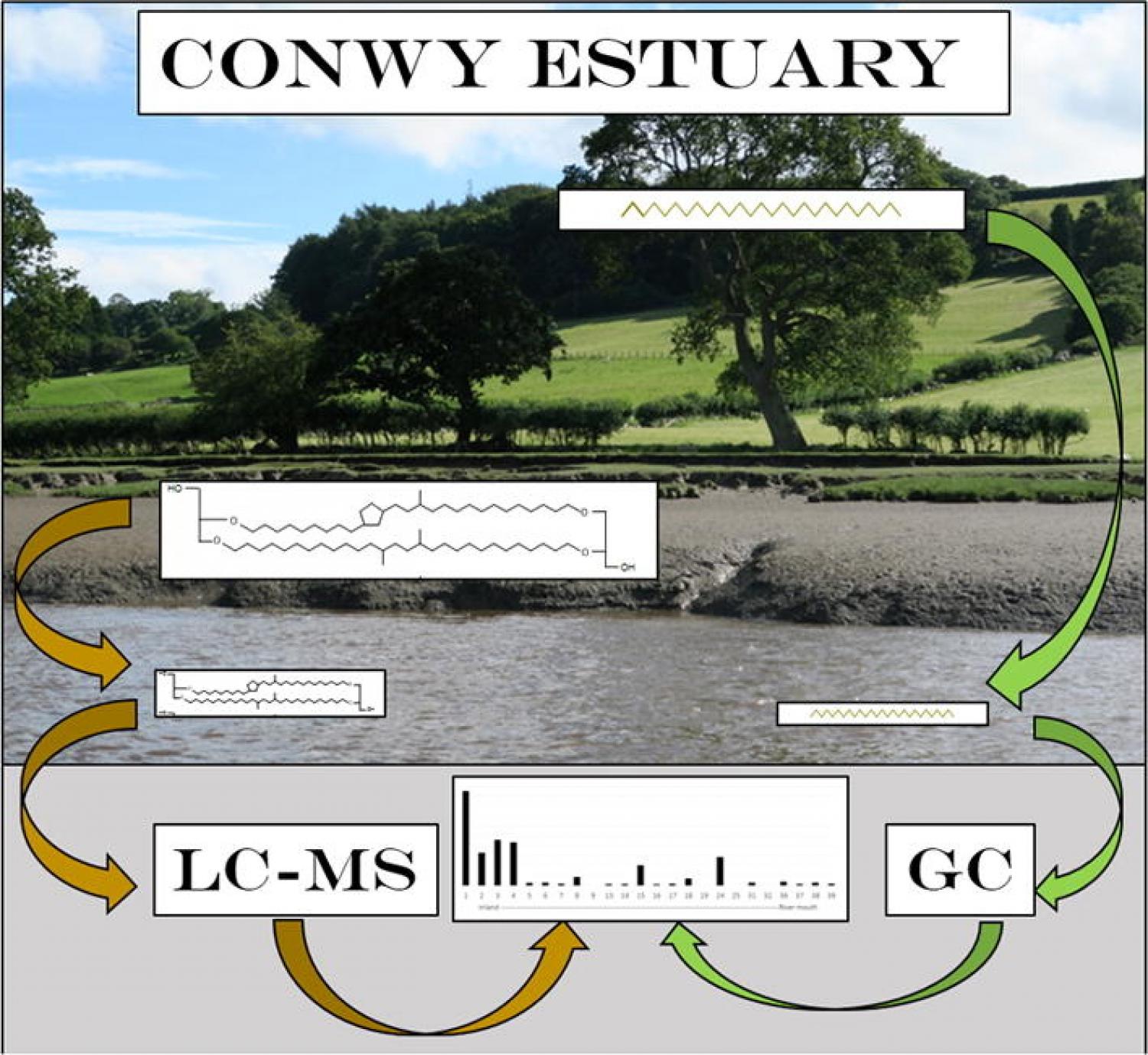
Owing to their restricted riverine flow and greater numbers, small estuaries (annual discharge < 2000 m3 s−1) are important sites of organic carbon (OC) storage in sediments. The Conwy Estuary is an exemplar small rural-agricultural catchment which delivers a diverse pool of terrestrial OC to the Irish Sea. Thirty-nine surface sediments, covering a distance of 10.5 km, were taken transversal as well as longitudinal to the estuary to examine local and distant catchment inputs. Biomarkers (branched Glycerol Dialkyl Glycerol Tetraethers - brGDGTs, n-alkanes) and molecular and bulk proxies (BIT, Paq, TAR, δ13C, C/N), showed sediments were dominated by terrestrial inputs, with only sediments of the three most seaward sites showing stronger physical and geochemical characteristics of a marine influence (e.g., sandier sediments and lower BIT). Biomarker concentrations in the Conwy were comparable to the more urbanised Thames and the Clyde estuaries. The three estuaries showed similar fractional abundance of the brGDGTs, recording an inverse trend between the hexamethylated and the tetramethylated brGDGTs, and showing the pentamethylated brGDGTs as the dominant group. A systematic decrease in terrestrial biomarkers from bank to the main channel confirmed either a strong localised erosion/runoff process or a decrease in water velocity leading to a higher deposition.
